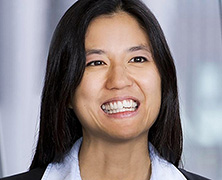What can be done to increase diversity in STEM fields?
Successful professionals who are leaders in the STEM field and also members of traditionally underrepresented groups can serve as mentors to help inspire the next generation. For example, many technology-centric trade organizations typically have women-focused breakout groups or networking events at their conferences. We could take that a step further and break it down more granularly, paving the way for identifying inroads with other populations.
In the legal world, something Latham & Watkins does particularly well is helping young law students from underrepresented backgrounds build a professional foundation. Through our Pathways Program, we provide substantive training, mentoring, and real-world experience within our offices, as well as an opportunity to work in one of our clients’ in-house legal departments — including a number of clients in STEM fields.
How is the world changing with respect to STEM?
The very definition of what STEM comprises continues to expand. Even five or 10 years ago, most people had a narrow view of what STEM could be and they often thought it included only the hard sciences or most technical aspects of mathematics and engineering. Such a limited view unnecessarily eliminates large populations of people, vast industries and off-the-beaten-path career opportunities. It also stymies opportunities for creativity and innovation among many women and those who think they don’t fit the stereotype. STEM is for everyone. STEM benefits everyone, and more people are recognizing that.
Describe your experiences as a woman in a STEM career. What else would you like our readers to know about being a woman in a STEM career in 2023?
I come from a family of doctors, and medicine felt like the path that I was always meant to be on. However, when I was an undergraduate, I also became interested in the policy aspects of medicine, particularly genetic research and bioethics, which inspired me to go to law school. One thing that I always teach my mentees, whether they are law or medical students, young associates, or even my own kids, is that there isn’t only one right way. Don’t be afraid to blaze your own trail because that is how I was able to define my career and personal success. It may be more difficult, and it may take you longer to get where you want to go, but it’s incredibly enriching to own the process and the outcome.







